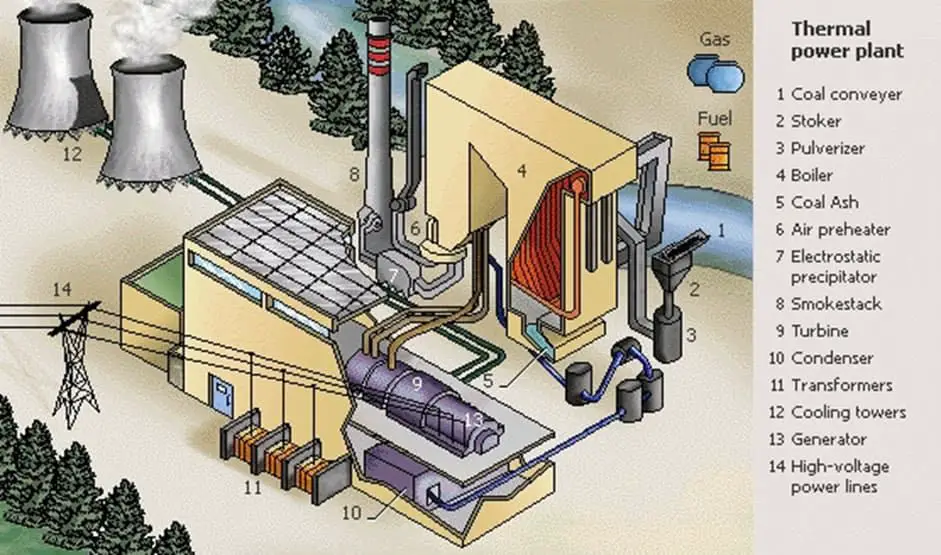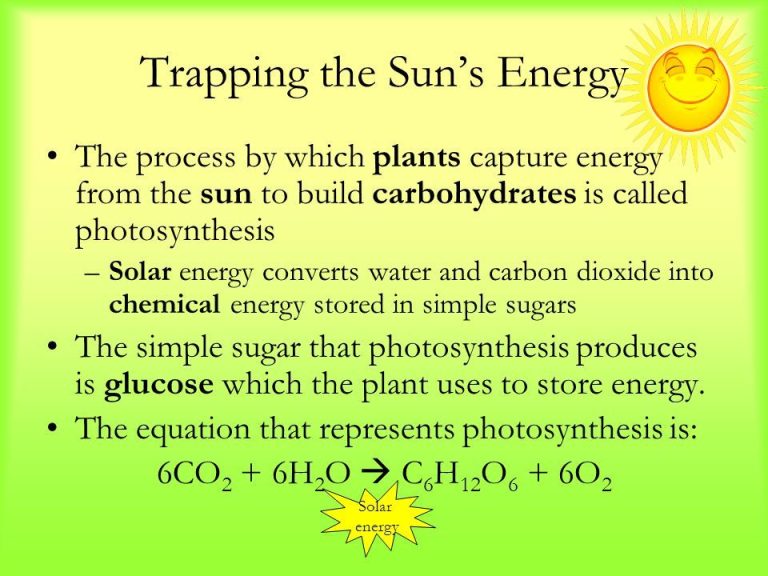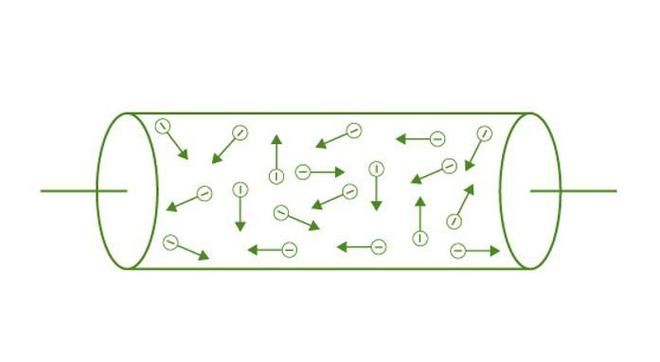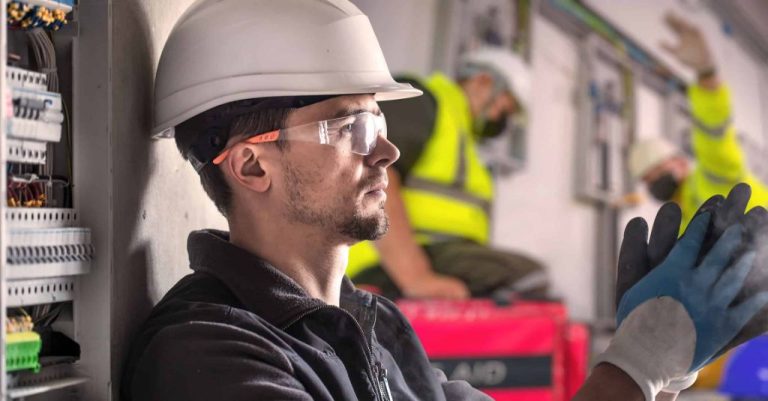How Is Electricity Generated In A Power Station Step By Step?
The process of generating electricity in a power station involves converting one form of energy into another to produce electrical energy. Power stations generate electricity using a variety of fuel sources like coal, natural gas, nuclear, hydroelectric, wind, solar and geothermal. Despite the diversity of fuels and technologies used, there are some common basic steps involved in generating electricity at most power stations.
First, an energy source like coal, gas, wind or water is used to turn a turbine connected to a generator to produce electricity. The generator produces low voltage electricity which then goes through a transformer to increase the voltage to make it suitable for efficient transmission over long distances. Once stepped up to high voltage, electricity is carried through transmission lines to substations near consumption areas where the voltage is decreased for distribution to end users. Throughout this multi-step process from fuel source to consumer, complex systems work together to provide reliable and affordable electrical power.
Fuel Supply
The fuel used in power stations can vary depending on what is available and cost-effective in the region. Some of the most common fuels used are:
- Coal – Mined from deposits of fossilized plant matter in the earth. Coal is crushed into a fine powder that is fed into the boiler.
- Natural gas – Extracted from underground deposits or imported via pipelines. Natural gas must be cleaned before it can be burned in the boiler.
- Fuel oil – Made from crude oil that is refined into fuel oil. Stored on-site in large containers before being sprayed into the boiler.
- Nuclear – Uranium fuel rods stacked together in the reactor core undergo nuclear fission to heat water.
Fuels like coal and gas are delivered to the power station by train, truck, ship or pipeline. They are unloaded and stored on-site, often in very large quantities to ensure adequate supply. Conveyor systems, cranes and other machinery move the fuel to hoppers that feed it into the boiler at a steady rate.
Boiler
The boiler is a critical component of a thermal power station. Its purpose is to convert water into high-pressure steam that can then be used to turn the turbine and generate electricity.

Here is how the boiler works in detail:
Water is pumped into the boiler from external sources like lakes or rivers. This water first goes into an economizer which helps preheat the water using waste heat from the boiler exhaust.
The preheated water then enters the boiler drum. The boiler drum contains tubes filled with water on one side and extremely hot combustion gases on the other. Coal is burnt in the furnace section to produce these hot gases.
As the preheated water passes through the tubes, the heat from the combustion gases is transferred to the water, converting it to superheated high-pressure steam.
The steam gets collected in the upper part of the boiler drum. It is now ready to be sent to the steam turbine to start the electricity generation process.
Steam Turbine
After the high-pressure steam leaves the boiler, it enters the steam turbine. The steam turbine is a mechanical device that consists of blades attached to a shaft. The high-pressure steam flows over the turbine blades, causing the blades to rotate on the shaft. As the steam turbine rotates at high speed, it spins the shaft that connects it to the generator. The fast rotation of the shaft causes the generator to spin rapidly as well. This is how the steam turbine converts the energy from the high-pressure steam into the mechanical energy needed to drive the generator.
Generator
The generator is the component that converts the mechanical energy from the spinning turbine into electrical energy. It works based on the principle of electromagnetic induction discovered by Michael Faraday.
Inside the generator, a rotor spins inside a stator. The rotor contains electromagnets which rotate past wire coils in the stator. This motion of the magnetic field across the stationary coils induces a voltage difference that generates electricity.
There are several types of generators used in power plants:
-
Synchronous generators – These have electromagnets on the rotor excited by a DC current. They operate synchronously with the grid frequency.
-
Induction generators – These have magnets on the rotor. They are excited by induction instead of DC current.
-
Permanent magnet generators – These use permanent magnets on the rotor and do not require excitation.
Regardless of type, the basic operating principle remains the same. The generator takes in rotational mechanical energy and converts it into electrical energy for transmission and distribution.
Transformer
After electricity is generated, it goes through a transformer, which steps up the voltage to reduce power loss during transmission. Inside a transformer are two coiled copper wires that don’t touch each other. The coiled wires around each create a magnetic field. When voltage passes through the first coiled wire (the primary winding), it creates a changing magnetic field that induces a voltage in the second coiled wire (the secondary winding).
By coiling the secondary wire more times than the primary, the induced voltage can be stepped up. For example, if the secondary has 10x as many coils, the voltage will be stepped up by 10x. This is important because power loss is proportional to the current squared. By increasing the voltage, the current is reduced, and less power is lost during transmission.
Transmission
Once electricity is generated and stepped up to high voltages by transformers, it is transmitted long distances along transmission lines. Transmission lines are made of aluminum wire suspended by large metal towers and poles. They carry high voltage electricity, usually 115,000 volts or more. Using high voltages reduces the energy lost in long distance transmission. The higher the voltage, the lower the energy loss.
Transmission lines are interconnected into regional, national, and even international grids, allowing power to flow between different utility companies. This helps balance electricity supply and demand across wide geographic regions. Protective devices called circuit breakers are used to automatically stop the flow of electricity if a power line fails or a short circuit occurs. Operators in control centers monitor the transmission system and can control power flows and voltage to maintain grid stability.
Distribution
The electricity generated at power stations must go through several steps to lower its voltage before it can be distributed to homes and businesses. Voltage is lowered for safety and to reduce power losses during transmission over long distances.
To distribute electricity, the voltage is lowered through transformers at substations. The very high voltage (230,000 to 765,000 volts) electricity from power stations is stepped down to high voltage (138,000 volts). It then goes through more transformers to bring it down to medium voltage (4,000-34,000 volts).
The medium voltage electricity is suitable for distribution through local networks. It runs along smaller power lines suspended from utility poles to neighborhoods. Transformers on the utility poles or underground further reduce the voltage to low voltage (120-480 volts) for use in homes and businesses.
Local utility companies operate the distribution networks that deliver electricity to their customers. The distribution system relies on many miles of power lines, transformers, switches, and other equipment to provide reliable power. Close monitoring and control of the distribution grid is essential.
Environmental Impact
The environmental impact of electricity generation depends greatly on the fuel source. Fossil fuel power plants, like coal, oil and natural gas, produce significant emissions that contribute to air pollution and climate change.
Burning fossil fuels releases pollutants like nitrogen oxides, sulfur dioxide, particulate matter and heavy metals into the atmosphere. These emissions contribute to smog, acid rain and respiratory illnesses. Fossil fuel power plants are also the largest source of carbon emissions, releasing over 2 billion tons of CO2 per year in the US alone.
Steps are being taken to reduce the environmental impact of electricity generation. Renewable sources like solar, wind and hydropower produce minimal emissions. Coal plants are deploying scrubbers and filters to cut emissions. There is also a push towards more sustainable power sources and greater energy efficiency to curb fossil fuel dependence.
While progress is being made, more work needs to be done to transition to a cleaner electricity grid, promote conservation, and develop innovative technologies like carbon capture to mitigate the impacts of power generation.
Conclusion
To summarize, generating electricity in a power station involves several key steps. First, a fuel source like coal, natural gas, or nuclear fuel is supplied to the power plant. This fuel is burned in a boiler to heat water and produce high-pressure steam. The steam then spins a turbine connected to a generator, which converts the mechanical rotation into electrical energy. Step-up transformers increase the voltage so electricity can be transmitted efficiently over long distances on transmission lines. Finally, distribution lines carry lower voltage electricity to homes and businesses for everyday use.
Reliable and abundant electricity is essential for modern life. Power stations operate 24/7 to supply the electricity we depend on to power our homes, businesses, hospitals, and so much more. While renewable energy sources are growing, traditional thermal power stations burning fossil fuels still generate the majority of our electricity. Power plant operators work hard to safely and sustainably meet electricity demand.




